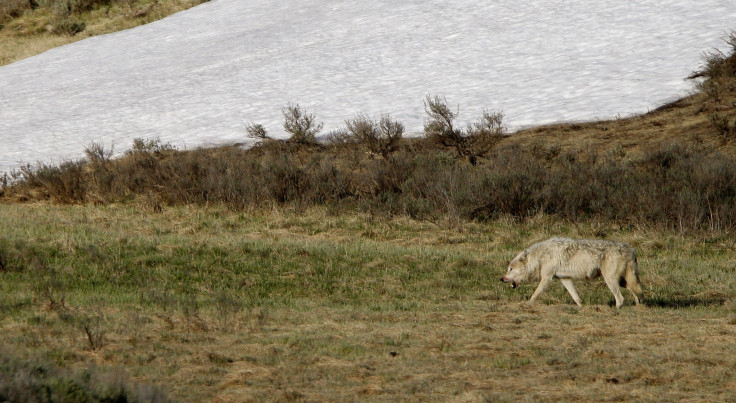Wolves In Yellowstone Aren’t Scaring Away Elks From The National Park

The elks that inhabit Yellowstone National Park still have a free-run of the place, despite the presence of wolves, which were introduced in the park just over 20 years ago, a paper has found. Reintroduction of the large predators was thought by some scientists to affect the habits of elk, which would be their natural prey and therefore avoid the places frequented by wolves.
The original population of wolves in Yellowstone was pretty much wiped out by the 1920s, but the animals were reintroduced there in the 1990s. That decision was made in an effort to reduce the park’s elk population, which had grown rapidly after the wolves disappeared from there. When wolves were brought in again, their natural food habits would reduce the number of elks, but some researchers thought the mere renewed presence of the predators would turn the park into a “landscape of fear” for their prey.
New findings show otherwise, however.
“Contrary to popular belief, the wolf is not a round-the-clock threat to elk; it mostly hunts at dawn and dusk, and this allows elk to safely access risky places during nightly lulls in wolf activity. Despite their Hollywood portrayal as nighttime prowlers, wolves tend to hunker down at night because their vision is not optimized for nocturnal hunting,” Michel Kohl, an ecologist from Utah State University (USU), said in a statement Friday.
Kohl was the lead author of the paper that appeared online Friday in the journal Ecological Monographs.
To arrive at their conclusion, researchers — from the universities of Montana, Minnesota, Wyoming, and Alberta, other than USU, and the National Park Service — took data that was collected between 2001 and 2004 from 27 radio-collared elks that tracked their movement. The data, which the researchers said had not been properly analyzed earlier, recorded the location of the animals every 4-6 hours.

Wolves were also tagged with GPS radio collars, which happened in 2004, giving researchers the insight that the predators were inactive in the middle of the night, like they were in the middle of the day. It also allowed them to see that elk had been frequenting spots they were likely to be attacked and killed by wolves, but at times when the predators were not at those sites.
“Elk avoided the riskiest places when wolves were most active, but they had no problem using these same places when wolves were least active. An elk’s perception of a place as dangerous or safe, its landscape of fear, was highly dynamic with ‘peaks’ and ‘valleys’ that alternated across the 24-hr cycle in response to the ups and downs of wolf activity,” Kohl said in the statement.
© Copyright IBTimes 2024. All rights reserved.





















